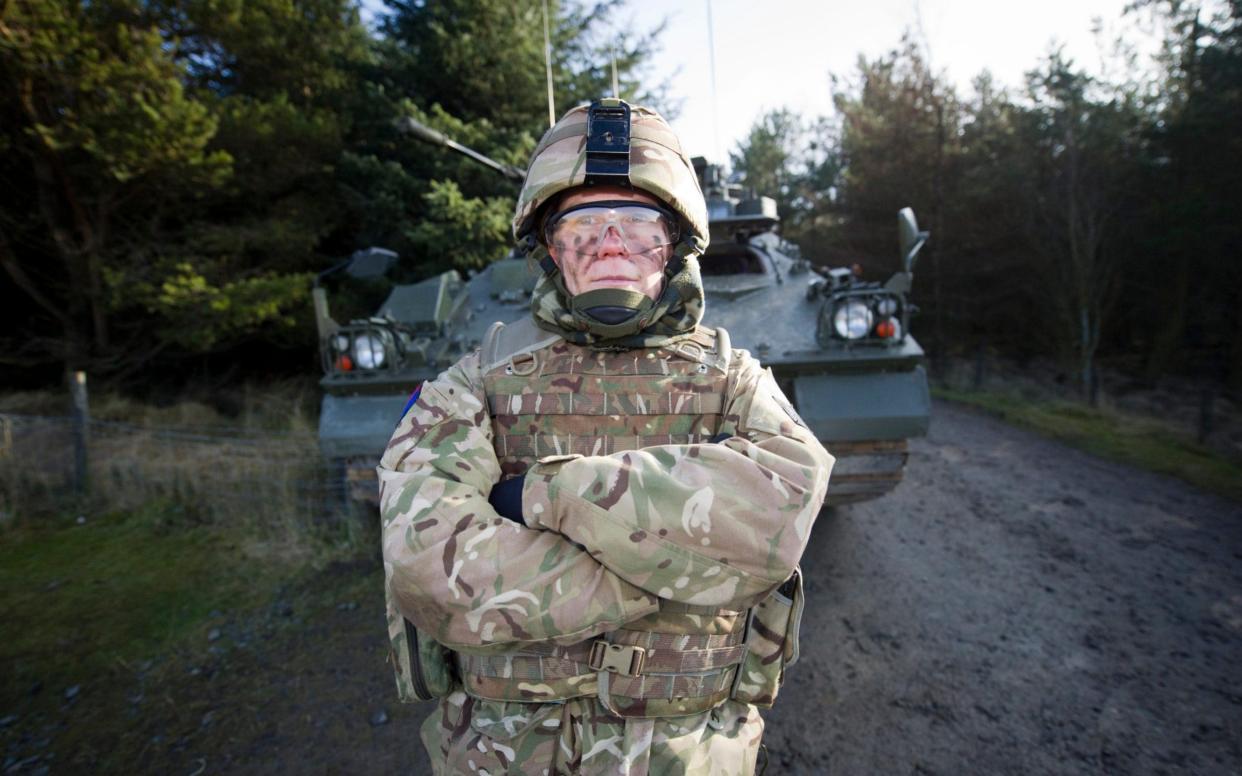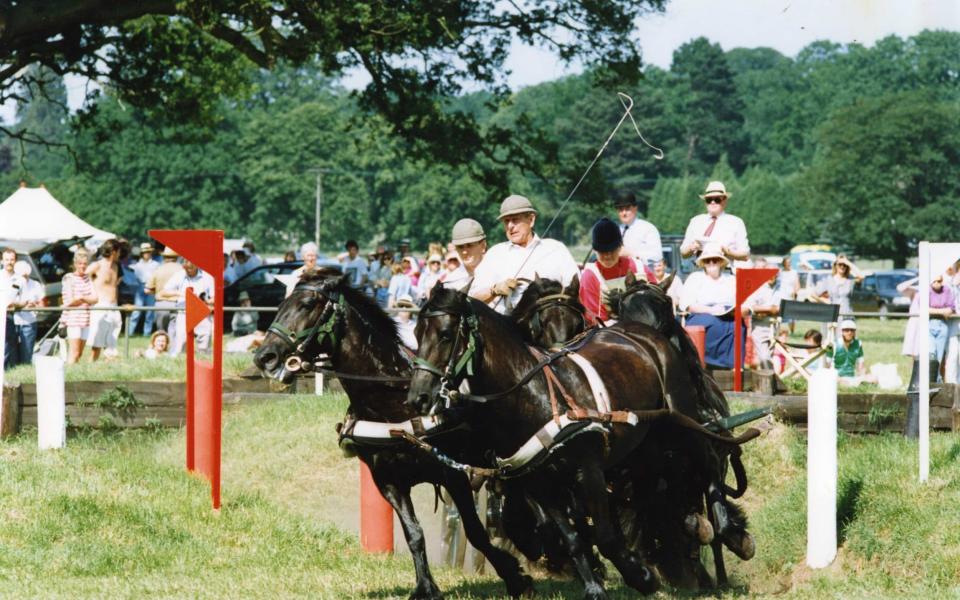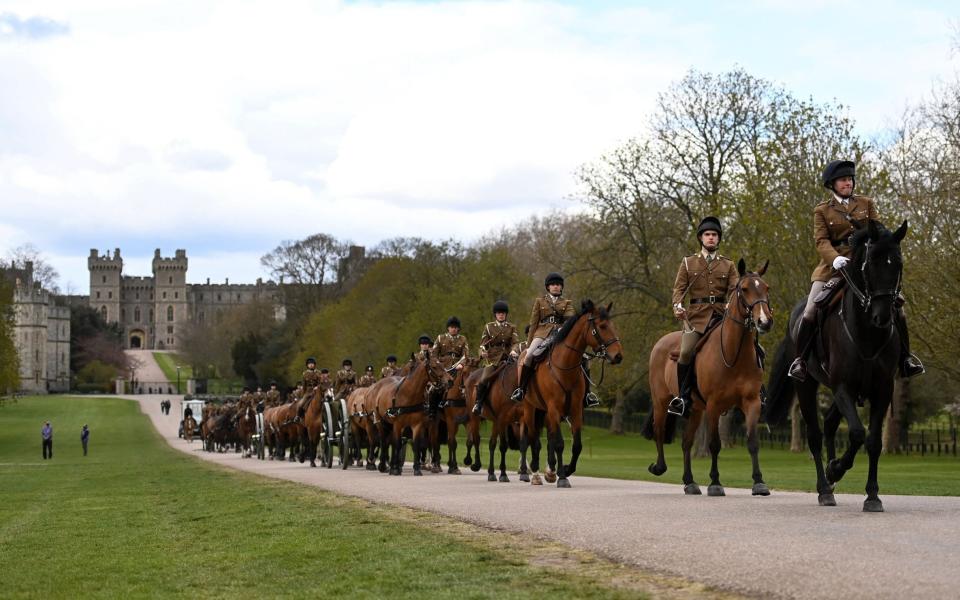Officer whose horse-handling skills were admired by Prince Philip to take part in funeral

- Oops!Something went wrong.Please try again later.
Among more than 700 military personnel taking part in Saturday's funeral will be a commanding officer who drew admiration from the Duke of Edinburgh for her handling of a difficult horse.
Major Victoria Flood, 41, drove the Duke’s carriage at Royal Ascot as a senior member of the Royal Mews in 2008.
As an exceptional carriage driver himself, the Duke was “incredibly complementary of Victoria’s handling of a difficult horse,” the Ministry of Defence revealed.
Major Flood described how the drive through the Great Park was always very quiet but once the carriage procession reaches the public roads, waiting crowds wave flags and shout support.
She said of this particular occasion: "My hand horse – the horse on the off side – was relatively newly trained in his role so had certainly not experienced crowds and flags being waved.
“To say he was overwhelmed is an understatement, it was an awful lot for him to take in. He spent the last part of the journey trying to get away from the crowds to the right of him and became quite difficult to control.

“We eventually made it to Royal Ascot Racecourse Paddock where the passengers alighted from the carriages. As HRH the Duke of Edinburgh got out of the carriage I was driving he came up to me and commented on the horse’s ‘exuberance’ and went on to compliment me on my handling of the horse.
"Coming from a man who is renowned for his carriage driving skills this was an incredible moment for me and clearly one that has stayed with me for many years."
Major Flood, from Wiltshire, has served in the Army for 11 years and deployed to Afghanistan in 2011.
As commanding officer of The King’s Troop Royal Horse Artillery she will lead the Saluting Battery of Her Majesty’s Household Troops during the funeral.
The unit will fire minute guns during the procession from the East Lawn of Windsor Castle – one round every minute during the procession for eight minutes. There will be two guns: one to fire and one as a spare.
The King’s Troop will ride out with 40 horses, 18 of them pulling three 13-pounder field guns.

On June 10 every year the unit took part in a 41-gun Royal Salute in Hyde Park to mark Prince Philip’s birthday. The last time this took place was last year, as he turned 99.
The King’s Troop also fired (below) the Death Gun Salute of 41 rounds at Woolwich Barracks in London last Saturday, the day after the Duke’s death.
It has six 13-pounder quick-fire guns, built between 1913 and 1918, all of which have seen active service in the First and Second World Wars.
They are used regularly for royal salutes in Hyde Park, Green Park or Windsor Great Park for state occasions and to mark royal anniversaries and royal birthdays.
The King’s Troop also mounts The Queen’s Life Guard in August and performs the Musical Drive at military tattoos and shows throughout the year.
Its soldiers are involved in a number of equine activities throughout the year, including the annual Troop point to point race at Larkhill, Wiltshire.

Since 1880, successions of Horse Artillery batteries were stationed in London to take part in ceremonial events, the last being mechanised in 1939.
It was King George VI’s wish that after the war a troop of Royal Horse Artillery, mounted and dressed in the traditional manner, should be formed to take part in the great ceremonies of state.
King George VI also decreed that mounted ceremonial gun salutes should be reinstated after their hiatus during the War.
On his first official visit to the regiment on 24 October 1947, he declared that the Riding Troop of the Royal Horse Artillery would be known as The King's Troop and enacted this by striking out the word “Riding” in their Visitors Book and inserting “King's”.
On her accession, the Queen declared that the name “The King's Troop” would remain in his honour.

